|
Getting your Trinity Audio player ready...
|
The rise of sophisticated Generative AI tools presents a paradigm shift for SEO professionals. From content creation at scale to hyper-personalized outreach, the opportunities to enhance efficiency and effectiveness are undeniable. However, this brave new world is not without its perils. Mishandled automation can lead to severe ranking penalties, dilute brand authority, and even create legal exposure. For SEO managers, agency owners, and in-house content leads, navigating this landscape requires a blend of enthusiastic adoption and cautious, strategic implementation. This article explores how to harness the power of Generative AI safely and ethically, focusing on white-hat workflows, robust quality assurance, and unwavering compliance.
The Double-Edged Sword: Opportunity and Risk in AI-Powered SEO
Generative AI offers tantalizing prospects:
- Massive Content Scalability: The ability to produce drafts, outlines, and even full articles at unprecedented speeds.
- Enhanced Ideation: Tools can analyze vast datasets to uncover niche topics, trending keywords, and content gap opportunities.
- Hyper-Personalized Outreach: AI can help craft tailored communication for link building and digital PR, potentially increasing success rates.
- Efficiency Gains: Automating repetitive tasks like meta description generation or initial keyword research frees up human talent for higher-level strategy.
However, the allure of automation comes with significant risks:
- Algorithmic Penalties: Google’s stance is clear: content primarily generated by AI to manipulate search rankings, without adding substantial value, violates their spam policies. Low-quality, unedited AI content can be flagged and penalized.
- Erosion of E-E-A-T: Expertise, Authoritativeness, and Trustworthiness (now with an added ‘E’ for Experience) are paramount. Over-reliance on AI without human oversight can produce generic, inaccurate, or unoriginal content that undermines these crucial signals.
- Copyright and Plagiarism Issues: AI models learn from vast datasets, and their outputs can inadvertently resemble existing content, leading to copyright infringement or plagiarism concerns.
- Brand Damage: Publishing inaccurate, poorly written, or off-brand content generated by AI can severely damage a company’s reputation.
- Legal Exposure: Beyond copyright, issues around data privacy (if AI tools process sensitive information) and disclosure (truth in advertising) can arise.
The key to success lies not in choosing between AI and human effort, but in integrating them intelligently. A “human-in-the-loop” approach is non-negotiable for sustainable, ethical, and effective Generative SEO.

White-Hat Workflows for Generative SEO
Integrating AI into your SEO workflows doesn’t mean abandoning best practices. Instead, it’s about augmenting human expertise with AI’s capabilities. Here are safe and effective ways to leverage generative AI:
1. Content Ideation & Strategic Planning:
- AI’s Role:
- Topic Clustering: Analyze competitor landscapes and SERPs to identify underserved topic clusters and semantic keyword groups.
- Question Generation: Generate common user questions related to a seed keyword (e.g., “People Also Ask” on steroids).
- Content Gap Analysis: Input your existing content sitemap and competitor URLs to find topics they cover that you don’t.
- Long-Tail Keyword Discovery: Unearth highly specific, lower-competition keywords based on a broader theme.
- Human-in-the-Loop:
- Strategic Validation: SEO strategists must validate AI-suggested topics against business goals, audience relevance, and search intent. Not every AI idea is a good idea.
- Prioritization: Humans decide which AI-generated ideas align best with the overall content strategy and have the highest potential ROI.
- Nuance & Creativity: Add unique angles, proprietary data, or brand-specific insights that AI cannot replicate.
- Input (Human): Define core business theme (e.g., “sustainable home gardening”).
- AI Tool: Generate 50 related sub-topics, 100 long-tail keywords, and a list of 20 common user questions.
- Review (Human): Content strategist filters, groups, and prioritizes these outputs based on search volume, relevance, and strategic fit. Selects top 5 content pillars.
- Refinement (Human): Develop unique angles for each pillar, incorporating brand voice and target audience pain points.
2. First-Draft Generation & Content Structuring:
- AI’s Role:
- Outline Creation: Generate structured outlines for articles, blog posts, or landing pages based on a target keyword and desired length.
- Intro/Conclusion Drafting: Create initial drafts for introductions that hook the reader or conclusions that summarize key takeaways.
- Section Expansion: Expand on bullet points or brief notes to form initial paragraph drafts.
- Meta Description & Title Tag Suggestions: Generate multiple options based on content summaries.
- Human-in-the-Loop:
- Prompt Engineering: Craft detailed prompts that guide the AI effectively (e.g., specify tone, target audience, key points to include, keywords to focus on).
- Substantive Editing: This is crucial. Human editors must rewrite, rephrase, and restructure AI-generated drafts to ensure accuracy, originality, clarity, and flow. AI drafts are starting points, not final products.
- Adding Expertise & Experience: Inject unique insights, case studies, personal anecdotes, and expert opinions that AI cannot generate authentically. This is vital for E-E-A-T.
- Input (Human): Provide AI with a detailed brief: target keyword (“organic pest control for tomatoes”), audience (novice gardeners), desired tone (helpful, encouraging), key sections (common pests, organic solutions, preventative measures), and a negative constraint (avoid promoting chemical pesticides).
- AI Tool: Generates a first draft of the blog post (approx. 800 words).
- Human Editor (Subject Matter Expert):
- Fact-checks all claims and recommendations.
- Rewrites sections for clarity, engagement, and brand voice.
- Adds personal gardening experiences or specific regional advice.
- Ensures the content directly answers the search intent.
- Optimizes for on-page SEO elements (headings, internal links).
3. Keyword Mapping & On-Page Optimization Assistance:
- AI’s Role:
- Semantic Keyword Suggestions: Analyze a piece of content (or an outline) and suggest related LSI keywords and entities to improve topical depth.
- Internal Linking Opportunities: Scan existing site content and suggest relevant internal linking opportunities for a new piece of content.
- Competitor Keyword Analysis: Analyze top-ranking pages for a target keyword and identify common keywords and themes they cover.
- Human-in-the-Loop:
- Strategic Keyword Selection: AI can suggest hundreds of keywords, but a human must select those that are most relevant, have reasonable search volume, and align with the specific intent of the page.
- Natural Integration: Avoid keyword stuffing. Humans ensure keywords are integrated naturally and contextually within high-quality content.
- User Experience Focus: Prioritize clear, helpful content over simply hitting a keyword density target.
4. Outreach Personalization & Link Building Support:
- AI’s Role:
- Prospect Identification (Assisted): Some tools can help identify potential link prospects based on content relevance or mentions, but this often requires significant human filtering.
- Drafting Personalized Snippets: Generate personalized opening lines or talking points for outreach emails by analyzing a prospect’s recent articles or social media activity.
- Subject Line A/B Testing Ideas: Suggest variations for email subject lines.
- Human-in-the-Loop:
- Prospect Qualification: Humans must vet AI-suggested prospects to ensure they are high-quality, relevant, and a good fit for the brand.
- Genuine Personalization: AI can provide a starting point, but genuine connection requires human insight. Reference specific points in their work thoughtfully, explain why your content is relevant to their audience. Generic AI personalization is easily spotted and ignored.
- Relationship Building: Link building is about relationships. AI cannot replicate the human touch needed for long-term partnerships.
- Ethical Conduct: Ensure all outreach is genuine, non-spammy, and provides real value to the recipient.
- Input (Human): Identify a target high-authority blog in the “sustainable living” niche.
- AI Tool: Analyze the target blog’s last 5 posts and the LinkedIn profile of its editor. Suggest 3 personalized icebreakers for an outreach email.
- Human Outreach Specialist:
- Reviews AI suggestions. Selects the most relevant one or crafts a new one based on deeper research.
- Writes the core email, clearly explaining the value of the content asset being shared.
- Ensures the email is polite, concise, and professional.
- Manages follow-ups and relationship nurturing.
QA Loops and Human Oversight: The Cornerstone of Responsible AI
Simply generating content or outreach drafts with AI is insufficient and dangerous. Robust Quality Assurance (QA) loops and continuous human oversight are essential to mitigate risks and maximize AI’s benefits.
1. Editorial Review Steps:
A multi-stage review process is critical for any content involving AI generation:
- Initial AI Output Review:
- Purpose: Quickly assess the raw AI output for basic relevance, coherence, and major factual inaccuracies.
- Who: Junior editor or content assistant.
- Action: Reject outright if completely off-base. Pass to substantive editing if potentially usable.
- Substantive Editing & Fact-Checking:
- Purpose: Deep dive into accuracy, originality, argument strength, logical flow, and E-E-A-T. This is where the heavy lifting of rewriting and adding value occurs.
- Who: Experienced editor, subject matter expert (SME).
- Action: Thoroughly verify all claims, statistics, and technical information. Rewrite, restructure, add examples, and ensure the content meets quality standards. Compare against existing content to avoid duplication.
- Tone, Style, and Brand Alignment:
- Purpose: Ensure the content aligns with the brand’s voice, style guide, and target audience expectations.
- Who: Brand manager or senior editor.
- Action: Refine language, ensure consistent terminology, and check for appropriate tone (e.g., formal vs. informal, technical vs. layperson).
- Copyediting & Proofreading:
- Purpose: Catch grammatical errors, typos, punctuation mistakes, and formatting issues.
- Who: Dedicated copyeditor or detail-oriented team member.
- Action: Final polish before publication.
2. Fact-Checking Protocols:
AI can “hallucinate” – confidently present incorrect information as fact. Therefore:
- Cross-Reference Everything: Verify any factual claim, statistic, date, or specific piece of information from an AI draft against at least two reputable sources.
- Prioritize Primary Sources: Whenever possible, trace information back to its original source (e.g., research papers, official government reports, direct quotes).
- Be Wary of Vague Claims: If an AI makes a general assertion without specific evidence, either find supporting evidence or remove/rephrase the claim.
- SME Involvement: For technical or specialized topics (YMYL – Your Money Your Life), involve SMEs in the fact-checking process. Their expertise is invaluable. Google states for YMYL topics, “content should be written or reviewed by people with relevant expertise and experience.” (Google Search Central – Creating Helpful Content)
3. Avoiding Duplicate or Low-Quality Outputs:
- Plagiarism Checkers: Run all significantly AI-assisted content through reliable plagiarism detection tools (e.g., Copyscape, Grammarly Premium).
- “Originality” Prompts: When using AI, explicitly ask for original content and provide negative constraints (e.g., “Do not copy phrasing from [competitor URL]”).
- Iterative Refinement: If an AI output is too generic or similar to existing content, refine the prompt, ask for different angles, or use it as a very loose inspiration point for human rewriting.
- Focus on Added Value: The core principle of Google’s helpful content guidelines is to create content that provides unique value. If AI is just rehashing what’s already out there, it’s not helpful. Human insight must add that unique value.
4. Feedback Loops Between AI Tools and Human Editors:
To improve the quality of AI outputs over time and make the human review process more efficient:
- Structured Feedback: Document common issues found in AI drafts (e.g., “frequently misinterprets X concept,” “tends to use overly formal language”).
- Prompt Library & Optimization: Maintain a library of effective prompts. When editors find a prompt that consistently yields better results, share it. If outputs are poor, analyze and refine the prompt.
- Negative Examples (if supported): Some AI platforms allow you to provide examples of what not to do. Use this to guide the AI away from common errors or undesirable styles.
- Custom Instructions/Fine-Tuning (Advanced): For organizations with the resources, fine-tuning AI models on their own high-quality content can lead to outputs that are more aligned with their brand and quality standards from the outset.
Example of a Feedback Loop:
- AI Output: Generates an article about “email marketing best practices.”
- Human Editor Review: Notices the AI consistently suggests outdated tactics and uses overly technical jargon for a beginner audience.
- Feedback to Prompt Engineer/Content Lead: “AI draft on email marketing included outdated advice on email frequency and used terms like ‘SMTP relay’ without explanation. The target audience is small business owners new to email marketing.”
- Action – Prompt Refinement: The next prompt for a similar topic includes: “Focus on current best practices for 2025. Explain all technical terms simply. Target audience: small business owners with limited technical knowledge. Avoid discussing tactics that are no longer effective, such as [specific outdated tactic].”
- Improved AI Output: The next draft is more relevant, uses appropriate language, and requires less substantive editing.

Copyright & Compliance Primer: Navigating the Legal and Ethical Maze
The use of generative AI in content creation brings a host of legal and ethical considerations that SEO professionals cannot afford to ignore.
1. Originality Risks & Copyright:
- Training Data Dilemma: AI models are trained on vast amounts of text and image data scraped from the internet, much of which is copyrighted. There’s an ongoing legal debate about whether this training constitutes fair use.
- Output Similarity: While AI aims to generate novel content, its outputs can sometimes be substantially similar to its training data, potentially infringing copyright. The more specific and complex the prompt, and the more niche the topic, the higher the risk if the AI doesn’t have diverse training data for that specific query.
- Who Owns AI-Generated Content?: Copyright law traditionally protects works created by human authors. The legal status of purely AI-generated content (with minimal human input) is still evolving globally. In the U.S., the Copyright Office has indicated that works lacking human authorship are not registrable. (See U.S. Copyright Office – Copyright Registration Guidance: Works Containing Material Generated by Artificial Intelligence).
- Practical Steps:
- Significant Human Transformation: The safest approach is to ensure that any AI-generated text undergoes substantial human modification, editing, and augmentation to the point where it can be considered a new, transformative work with clear human authorship.
- Use AI as an Assistant: Frame AI’s role as an assistant or a tool, not the author.
- Avoid Generating Content on Highly Unique, Copyrighted Material: Don’t ask an AI to “rewrite Chapter 3 of Harry Potter in the style of Hemingway.”
2. Disclosure Requirements & Transparency:
- Google’s Stance: Google has stated that disclosure of AI use is not mandatory if the content is high-quality and adheres to E-E-A-T principles. Their focus is on the quality of the content, not how it’s produced. However, they also say, “Disclosing AI or automation is also appropriate when it would be reasonably expected by readers.” (Google Search Central Blog – Google Search’s guidance about AI-generated content).
- Reader Expectations & Trust: For certain types of content (e.g., investigative journalism, personal reviews, expert opinions), readers may expect full human authorship. Undisclosed significant AI involvement could be seen as deceptive.
- FTC & Advertising Standards: If AI is used to generate testimonials, endorsements, or product descriptions, these must still comply with truth-in-advertising laws. Misleading claims generated by AI are still the responsibility of the publisher.
- Practical Steps:
- Internal Policy: Develop an internal policy on when and how to disclose AI use.
- Err on the Side of Transparency: When in doubt, especially if AI plays a very significant role in content that implies deep personal experience or expertise, consider a brief disclosure (e.g., “This article was drafted with AI assistance and extensively reviewed, edited, and fact-checked by our human editorial team.”).
- Focus on “Helpful Content”: Regardless of disclosure, ensure the primary goal is to provide genuinely helpful, reliable, people-first content.
3. Staying Within Google’s Guidelines:
Google’s core message regarding AI-generated content is consistent with its long-standing advice: focus on creating helpful content for users, not for manipulating search rankings.
- Key Google Guideline: “Using automation—including AI—to generate content with the primary purpose of manipulating ranking in search results is a violation of our spam policies.” (Google Search Central Blog – Google Search’s guidance about AI-generated content).
- Emphasis on E-E-A-T: AI-generated content will be evaluated on the same E-E-A-T criteria as human-generated content. This means it must be accurate, demonstrate expertise, be authoritative, and trustworthy. It must also now reflect ‘Experience’. Purely AI-generated content often struggles with demonstrating genuine experience.
- Avoid Low-Quality, Unoriginal Content: Mass-producing unedited or lightly edited AI content is a recipe for failure.
- Practical Steps:
- Human Oversight is Key: Always use AI as a tool to assist human creators, not replace them.
- Add Unique Value: Ensure that any content involving AI offers unique insights, analysis, data, or perspectives that go beyond what AI can generate on its own.
- Prioritize User Needs: Create content that answers user questions, solves their problems, and provides a satisfying experience.
4. Documenting Compliance & Attribution:
- Internal Records: Maintain records of which AI tools are used, for what purpose, and the extent of human review and editing applied to AI-assisted content. This can be useful for internal quality control and if questions arise later.
- Attribution for AI-Generated Media: If using AI to generate images or other media, be aware of the terms of service of the AI tool regarding commercial use and attribution requirements. Some tools or image licenses may require attribution.
- Style Guide Updates: Incorporate guidelines for AI use, disclosure, and quality standards into your existing editorial style guide.
Conclusion: The Future is Augmented, Not Automated
Generative AI is not a magic bullet for SEO success, nor is it an inherently “black hat” tactic. Its impact – positive or negative – depends entirely on how it’s wielded. For SEO managers, agency owners, and content leads, the path forward involves embracing AI as a powerful assistant while doubling down on human expertise, ethical considerations, and an unwavering commitment to quality.
By implementing white-hat workflows, establishing rigorous QA processes, and staying informed on copyright and compliance issues, you can unlock the transformative potential of generative AI to enhance your SEO efforts, scale your content operations responsibly, and ultimately, deliver greater value to your audience and clients. The future of SEO isn’t fully automated; it’s intelligently augmented.
Checklist: Do’s and Don’ts for Using AI in SEO Safely
Do:
- ✅ DO use AI for brainstorming, ideation, and identifying content gaps.
- ✅ DO use AI to generate first drafts and outlines as a starting point.
- ✅ DO implement a rigorous human-in-the-loop process for all AI-assisted content, including multiple stages of editorial review and fact-checking.
- ✅ DO ensure subject matter experts review and enhance content, especially for YMYL topics.
- ✅ DO focus on adding significant human value, unique insights, and proprietary information to AI-generated drafts.
- ✅ DO use plagiarism checkers and critically evaluate AI outputs for originality.
- ✅ DO craft detailed prompts and provide feedback to improve AI output quality over time.
- ✅ DO stay updated on Google’s guidelines regarding AI-generated content and copyright law.
- ✅ DO prioritize creating helpful, reliable, people-first content that demonstrates E-E-A-T.
- ✅ DO consider disclosing AI assistance when it’s significant and readers might reasonably expect it.
- ✅ DO document your AI usage and compliance processes internally.
Don’t:
- ❌ DON’T publish raw, unedited AI-generated content directly.
- ❌ DON’T use AI with the primary purpose of manipulating search rankings without adding substantial value.
- ❌ DON’T rely on AI for factual accuracy without thorough human verification from reputable sources.
- ❌ DON’T assume AI-generated content is inherently original or free from copyright issues.
- ❌ DON’T let AI dilute your brand voice or compromise your quality standards.
- ❌ DON’T use AI to create content that lacks E-E-A-T (Experience, Expertise, Authoritativeness, Trustworthiness).
- ❌ DON’T automate outreach to the point where it becomes impersonal or spammy.
- ❌ DON’T ignore the evolving legal and ethical landscape surrounding AI in content creation.
- ❌ DON’T view AI as a replacement for human strategists, creators, and editors.
- ❌ DON’T generate content on topics where you or your team lack genuine expertise to validate and enhance it.
